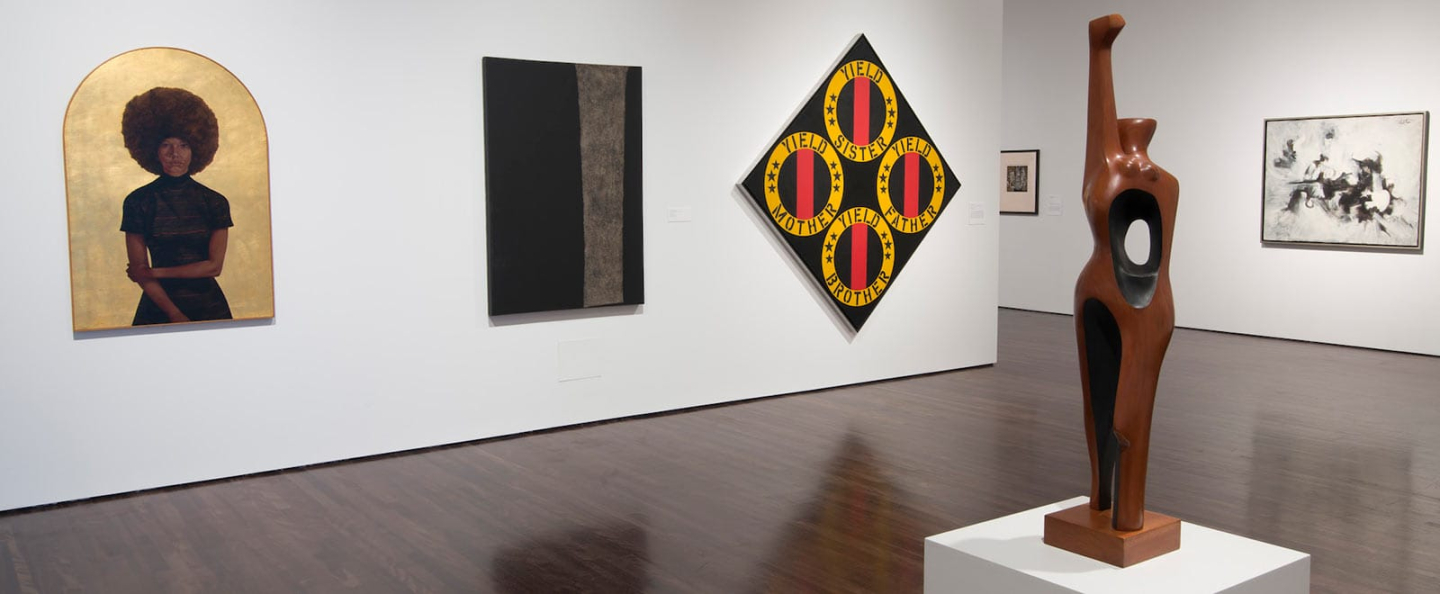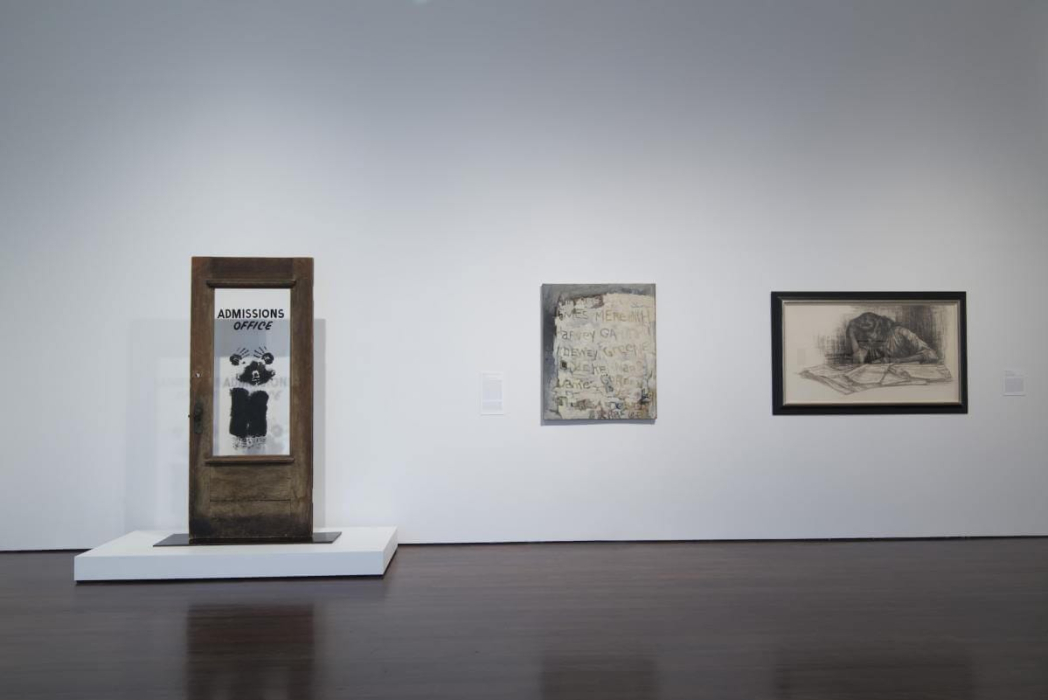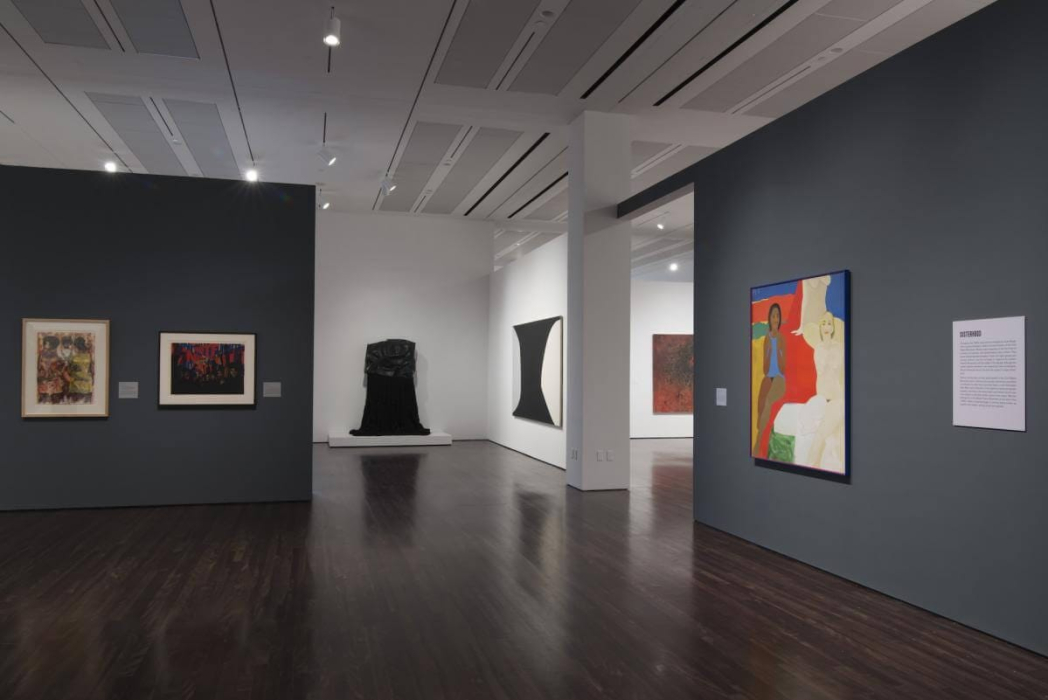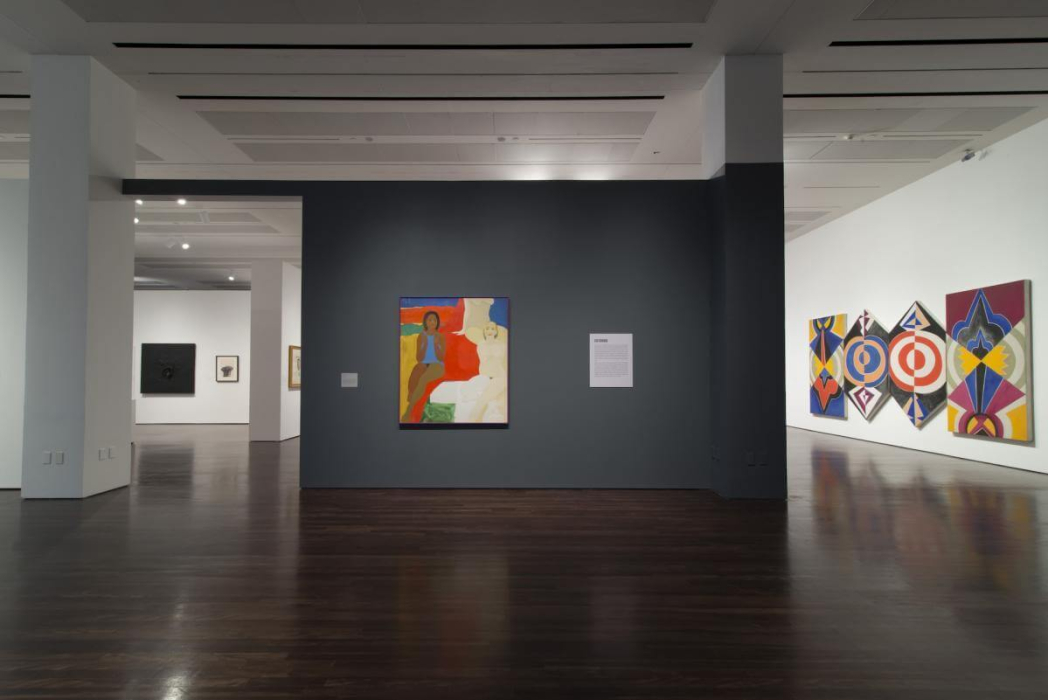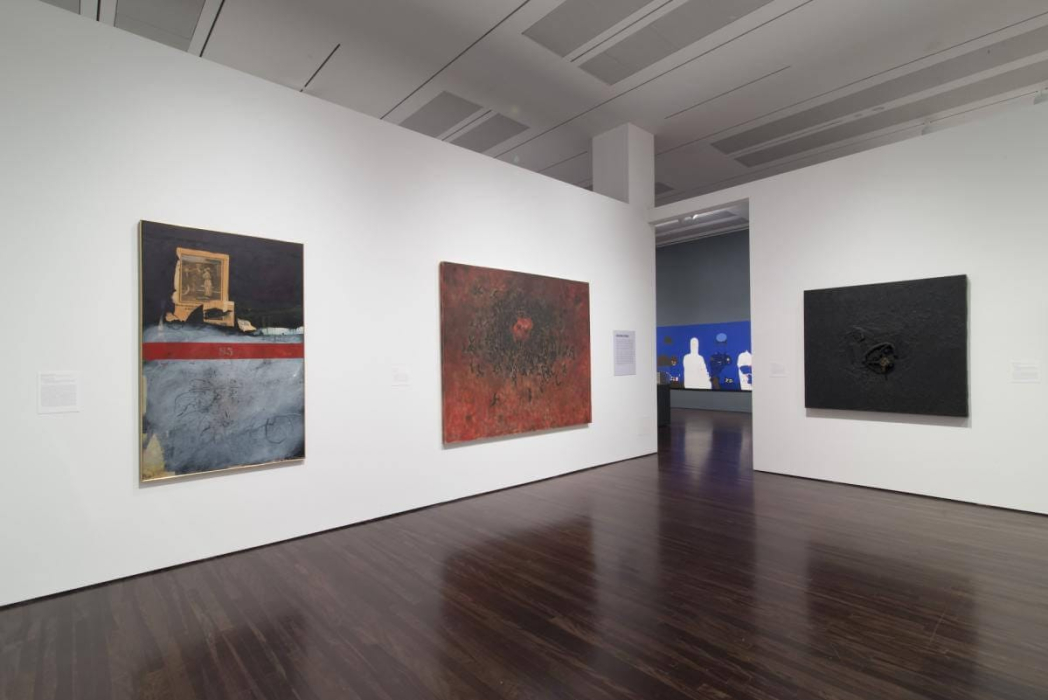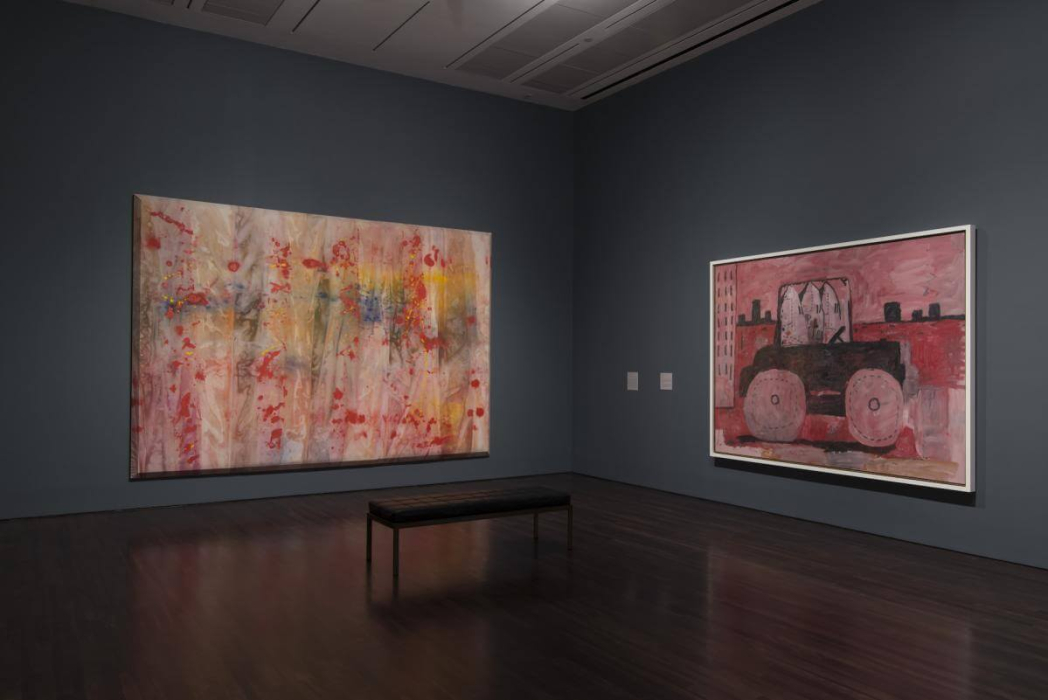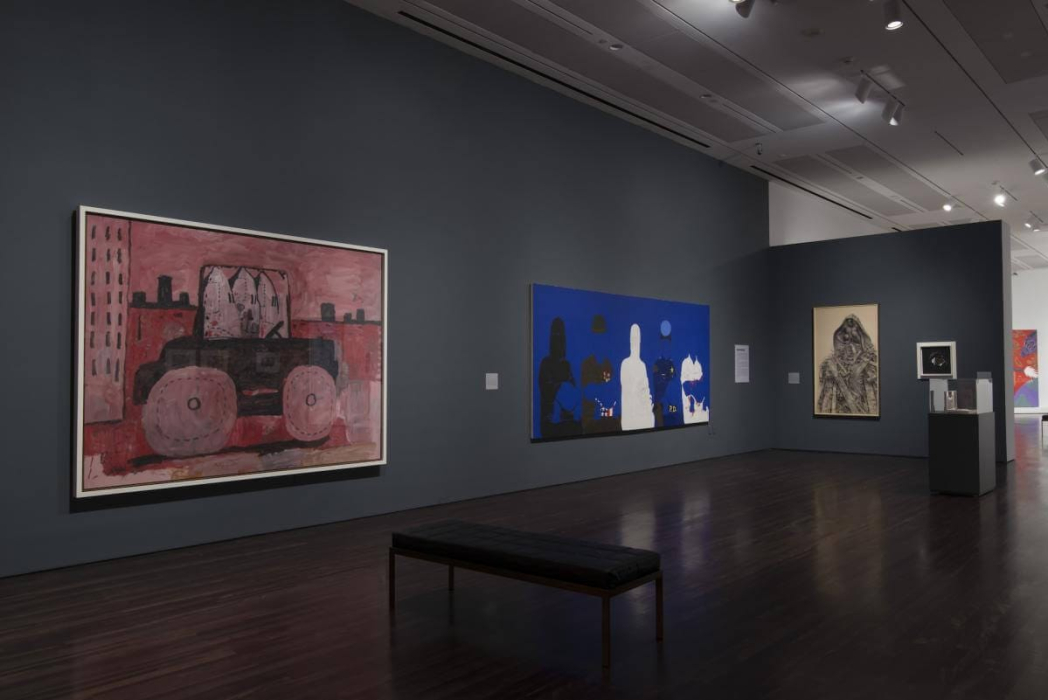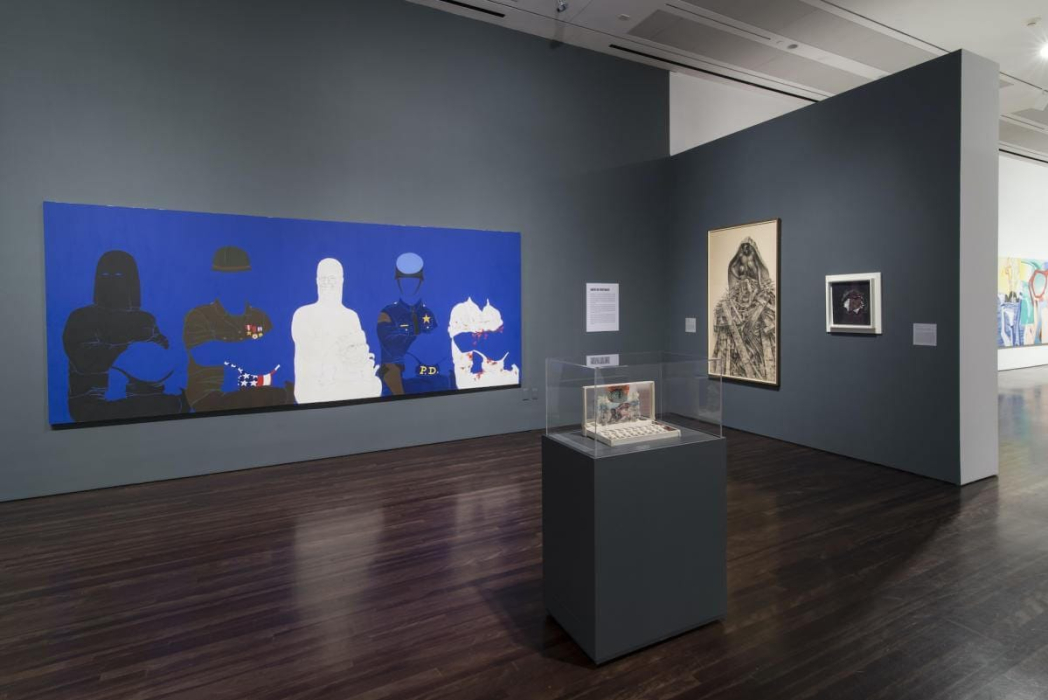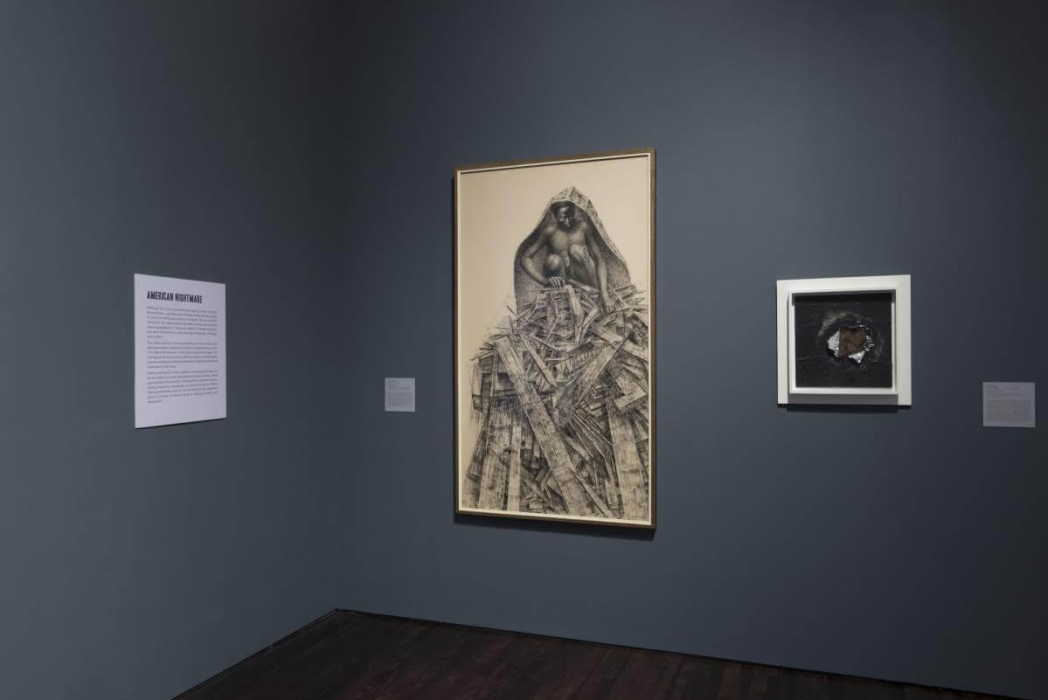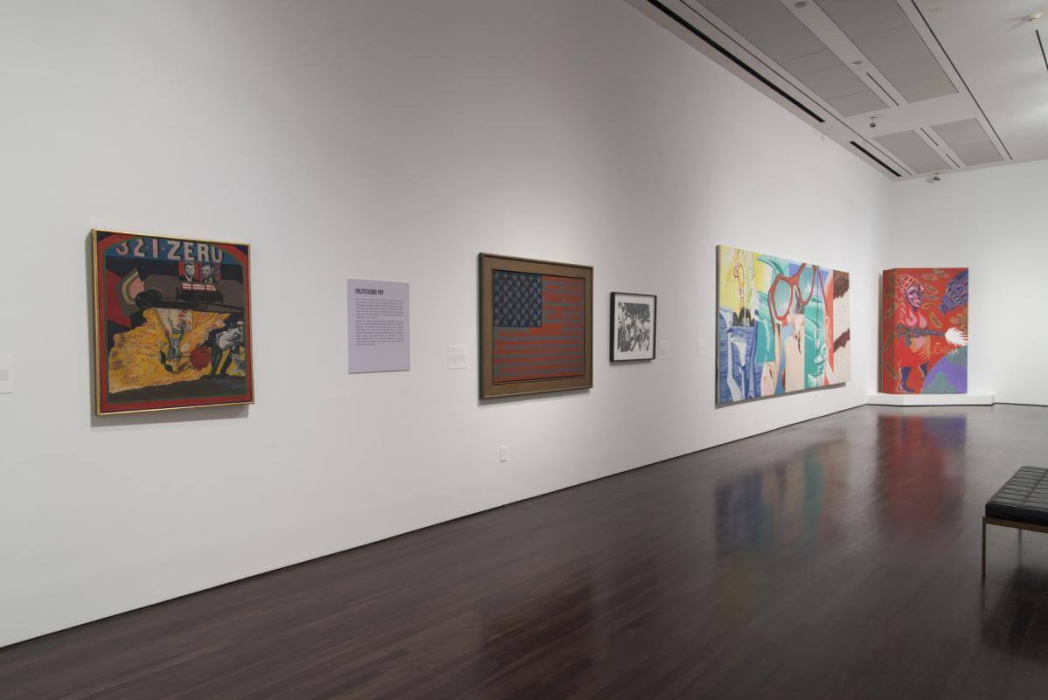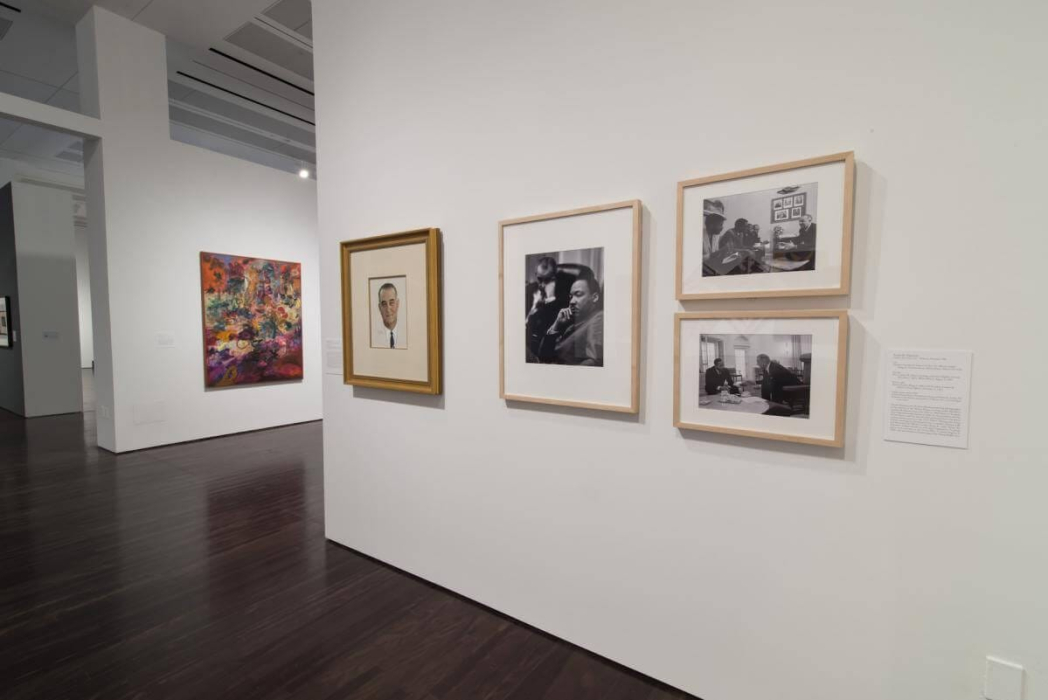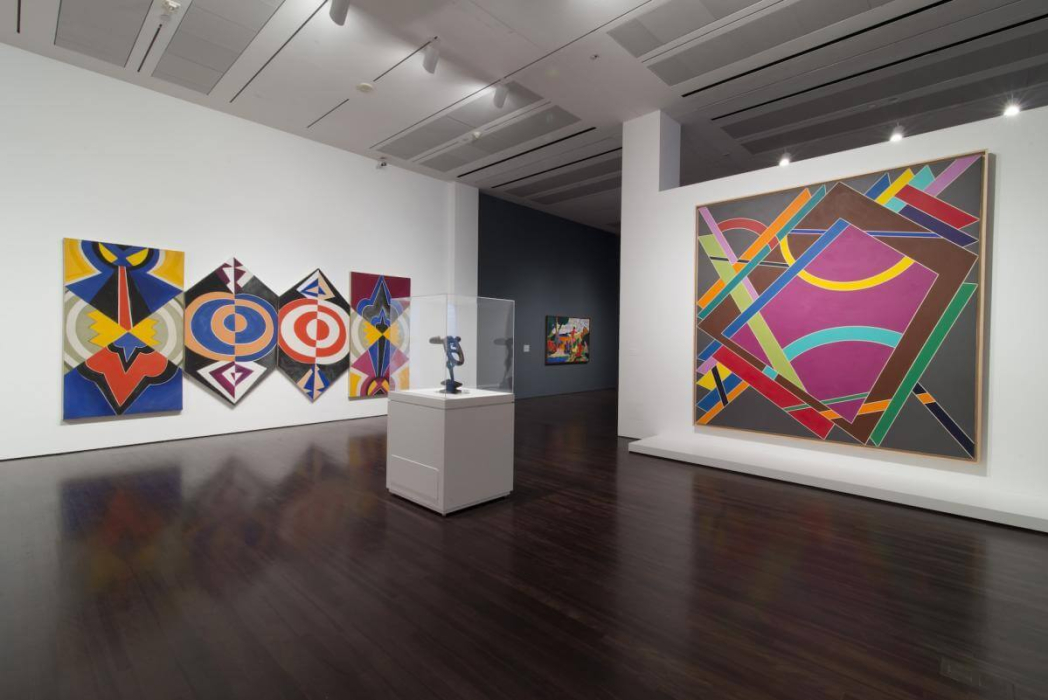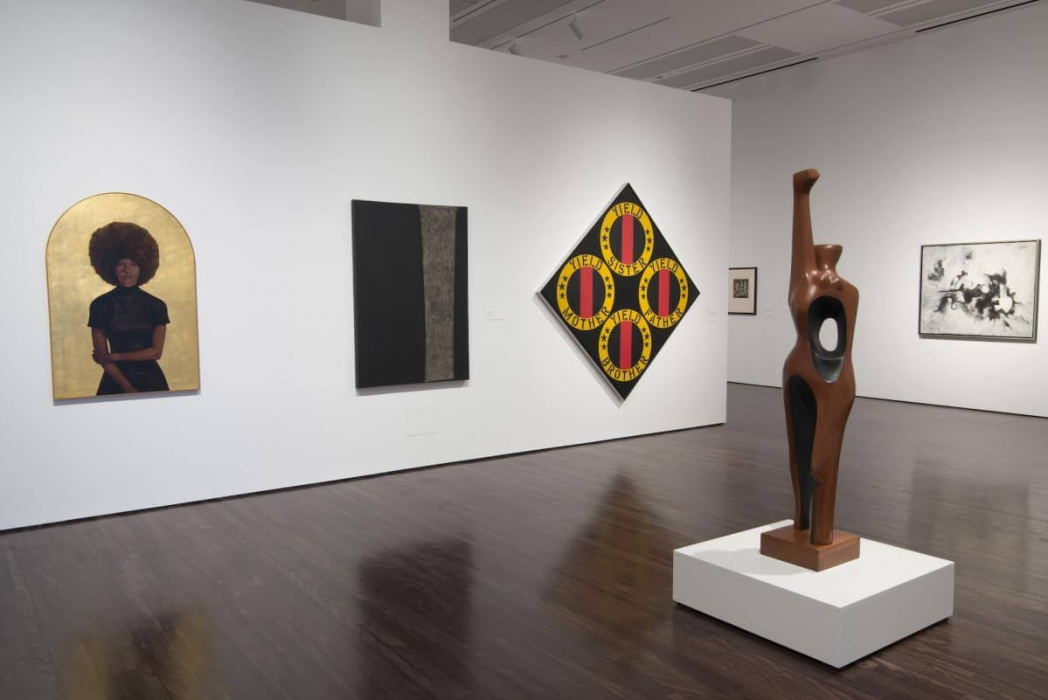Chapter 3
February 15 –May 10, 2015
In the spring of 2015 the Blanton presented Witness: Art and Civil Rights in the Sixties, an exhibition of approximately 100 works by 66 artists that explored how painting, sculpture, drawing, printmaking, and photography not only responded to the political and social turmoil of the era, but also helped influence its direction.
Organized by the Brooklyn Museum, the exhibition highlighted the wide-ranging aesthetic approaches used to address the struggle for civil rights. The diverse group of artists in the exhibition included, among others, Barkley Hendricks, Charles White, Andy Warhol, May Stevens, Philip Guston, Betye Saar, David Hammons, Jack Whitten, Danny Lyon, Romare Bearden and Faith Ringgold.
During the dramatic and often violent social and cultural upheaval of the 1960s, many artists aligned themselves with the burgeoning Civil Rights Movement to address the issues of the time in their art and, often, to participate in acts of protest. From this crucible emerged powerful works that were dramatically wide-ranging in aesthetic approach, encompassing abstraction, assemblage, figural work, Minimalism, Pop art, and photography. Creating works informed by the experience of inequality, conflict, and empowerment, artists tested the political viability of their styles through art that addressed resistance, self-definition, and blackness.
Among the works on view was Jack Whitten’s Birmingham, 1964, which was created in reaction to the famous race riots in that city and uses layers of black paint, crushed aluminum foil, and sheer stocking mesh to reveal and obscure a newspaper photograph of the confrontations between protesters and police in Birmingham. We were fortunate to host Jack Whitten at the Blanton on February 22, 2015 for a conversation with Dr. Kellie Jones, one of the exhibition curators. Listen to audio excerpts of the talk in the links below.
Jack Whitten: I grew up in 100% total American apartheid. There’s no other way to put it. It’s no other way to put it. Totally 100% American apartheid. Everything was separated. The whole concept of separate but equal was a cruel joke. I have no memory whatsoever of nothing being equal. Nothing. Every aspect of our lives were dictated by white people: employment, all forms of economics, transportation. When you see those photographs of the signs which says colored and white, I grew up with that. The city bus there was a sign the front of the bus said “white,” the back said “colored,” and you are not allowed to remove that sign. In truth, one of my memories from childhood is the death of a young man, the Hood family.
He came home with his from the army with his uniform on, and one day he boarded the bus and he removed the sign to take a seat. The bus driver pulled out a pistol and killed this young man. Now I have memories of the hearse moving through the Black neighborhoods. They did it purposely of a flag-draped coffin and the people in the neighborhoods made sure that it went through all the Black neighborhoods. That black flag-draped coffin, I remember that. A lot of stuff that I witnessed growing up in the South, I don’t even mention, because it’s like, how much weight can one bear from memory? There’s a limit, there’s a limit. Everything.
We had a park in Bessemer, Alabama. The only shaded spot in the whole town, really. We could walk through that park, but we could not sit down. And God forbid there was a water fountain that you didn’t go near that. I think Alabama in the summertime is hot. I mean, you sweat. The humidity is like, can be 80 to 90 degrees humidity. Bessemer, we had a lake, “West Lake” we call it. It’s a large lake. There was a roadway that passed through the middle of the lake with a bridge. We could walk and stop at that bridge, and we had to look from a distance at all the white kids having fun with their water slides, their floats. We couldn’t go there. We had to stand on the bridge. My brothers and I and my buddies, we were into fishing. I could look at the fish, but I couldn’t fish for them. But my good buddy JD and I would sneak in the back, and we developed a technique we call “tight line.” It’s a form of fishing with a cane pole that we cut ourselves, by the way. We would fish for bluegills. I often tell the story, I was never in the army, I never went to Vietnam, I’ve never been into combat. But I know what the sound of a bullet sounds like when it passes over your head. There were signs in the back there where we used to sneak in which said, “No N****** Allowed.” That’s the way it was put. But we would sneak in anyway. There’s a lot of incidents like that. There was a swimming pool in Bessemer. We could pass by and watch, but we could not participate. Now, this was owned by the city, this was taxpayer’s money.
Dr. Kellie Jones: Did they have any black swimming days? Negro swimming days?
Jack Whitten: No, absolutely not, absolutely not, didn’t exist. We had one public pool on the other side of town in Birmingham in a place we called “Tuxedo Junction.” And they would put us on a bus and we’d go all the way across town into Birmingham. And they’re overcrowded, that’s the time. My older brothers and some of the older boys in the neighborhood dammed up Parsons Creek. Parson Creek was a creek that I used to fish in. My older brothers dammed it with logs and wood, and made us a swimming pool. It was a lot of fun. I have some great memories. We had a classic car tire hanging from a rope from a tree that would climb in, swing in, drop. It was a lot of fun. But evidently for the white folks, it was too much fun.
One night they came in and they dropped tons of broken bottles into our swimming pool. Now, unbeknownst to us, the first kid who jumped in the next morning came out with bloody feet. That kind of a thing. And those kinds of stories, the stories I’m telling you now are quite mild. Very mild.
Dr. Kellie Jones: There’s another story that you have about the library.
Jack Whitten: Yes.
Dr. Kellie Jones: You started out talking about the library at Cooper Union. So, I think it would be interesting to tell people, I mean, you talked about that library, I mean there’s a lot of students who talk about going to the library and being in love with it, but I think your story about libraries in the South, we’ll put that in another context, if you can tell that story.
Jack Whitten: There was a building in Bessem, Alabama. Very imposing building, I remember. Very big white pillars, big brick structure. Quite an amazing building in my little mind. And I never knew what went on in that building. My mom allowed me to go downtown to visit my Aunt Lana. She and her husband own a restaurant called “Hall’s Cafe.” Anybody from Bessemer during the forties would know Hall’s Cafe, that was my aunt’s place. And on the way home, I decided, I must have been eight years old, I wanted to peep into that building and see what it was. And I remember pulling myself up on the windows and peeping inside. What I saw was whole walls of books. I became so excited. There were people sitting at the tables and chairs, these very nice tables, reading.
I lowered myself down and I think I ran all the way back home. And I ran home and I told my mom what I saw. She went into a fury. She cursed, she hollered at me. She says, “You have to promise me never to do that again! Don’t you understand? Those people will kill you. Don’t you ever do that again.” It was the public library, the Carnegie Library, but we couldn’t go. There was no library. But before I graduated Dunbar High School, maybe about the 10th year, people in Bessemer took it upon themselves to make the Bessemer Color Library. It was a small room about, at the most, 10ft square, and they had given a few books. And there we could go and read a book. I mean it’s an unbelievable story. I mean, it’s something you take for granted today, being able to go to the library.
Jack Whitten: Okay, the painting, Martin Luther’s Wish, I’d met Martin Luther when I was a freshman during the height of the bus boycott in Montgomery. I went there. Tuskegee was playing Alabama State, and I was in the marching band. I had to be in Montgomery and I heard that King was speaking, so I took time off and went over to meet him. I only met him that one time, at the church, in Montgomery. That would be that would be the fall of 1957. Made a great impression upon me. It’s amazing how this stuff comes together at some point, you know. So many intense experiences, and knowing and meeting so many people. I’ve been fortunate in a way, of meeting and knowing a lot of people who have given me a lot of good information.
When I met King in ‘57, again, he made a great impression upon me as a young person. The march on Washington, I was there in that crowd. I was right down there at the base of where he was speaking. A bunch of us from New York went there. Yes, I heard the dream, I heard the speech, I was there, I heard it. At the same time, there was something not right about it to me, there was a lot of skepticism, a lot of things that I just did not believe. You know the old folks used to say at home when things got really bad in Alabama, to comfort us they would say, “Well, their kids will be better.” That was the hope. “You’re experiencing this now, but their kids will be better.” That was the hope that was given to us, and we believed in that.
When King spoke, you know, the hope was there. Somehow, in my young mind, I was still skeptical of it. There was a lot of doubt, a lot of doubt. There was joy and hearing his speech and hearing someone say that, but at the same time, I had a lot of contradictions about what he was saying. So, it’s a lot of contradictions driving that painting, there’s a lot of doubt driving that painting. Yeah. Now, the assassination paintings, by the way, you know, these paintings are part of a whole series, there must be, oh that could be I don’t know, Alex, how many, you think, 10, 12 paintings?…Yeah, we lost several of them in the fire. We, it must have been at least eight of them, though, that’s part of a series all in dedication to Martin Luther King. And not mere dedications, there’s a long narrative there. It’s more than just a dedication. There’s a narrative there.
Dr. Kellie Jones: So, it seems like you’re working with the idea of your doubt, your skepticism, your hopes, throughout the series. I mean, that’s what it seems as an, I mean, the idea of the Oracle is somebody who’s this kind of all-seeing figure, in a way.
Jack Whitten: Yeah, the Oracle is, you know, historically, throughout history, people have always had and believed in oracles, you know. There are two assassination paintings. This painting happened before the assassination. I saw it. I knew something was coming down. Hence the white crab. I knew it was something horrifically evil coming down. And then the second assassination painting is after the assassination, when the shit came together and I realized that my feelings were correct, I did the second one when the news hit. I have no explanation for things like that. Throughout my career as a painter, I have, images have surfaced like that. I have no explanation for it. I try not to make a big deal out of it, but it’s something that I’m aware of.
Jack Whitten: In Bessemer, for our high school trips, they didn’t take us to the museums. I didn’t walk into a museum until I came to New York in 1960. It was not allowed. But they did take us to the steel mills. They took us to the steel mills; I saw the process step-by-step. They did take us to the coal mines. My dad was a coal miner. They did take us to the limestone mills. We had areas in Bessemer, if you went to the towns that mined the limestone, they were all white. Other towns that mined the coal, they were all black. Other towns that mined the ore, they were all red. Now, that’s why the steel mills came to Bessemer in the first place, because we had the raw material. That’s why they came there. Bessemer’s ring by all the raw materials is there.
I used the word sensibility. My sensibilities were formed there. I know exactly where I came from. I know exactly, I can research it. Thornton Dial is aware of a lot of that, you know Thornton always tries to get me to come home. He says to me “Whitten, why don’t you come home? I know 30 acres over there you can buy. We can do coon hunting together.” He’s very much aware of that in the surrounding, you know in that era. But it’s a very good lesson, in terms of what informed the artists and where we get our information from, that’s for sure.
Dr. Kellie Jones: Can you talk about how your experiences living in the South contributed to your decision to become an artist?
Jack Whitten: I should start at 1960 when I entered art school at Cooper Union, as a freshman, in 1960. Cooper Union had a world class art library. And my favorite thing to do was to browse through the library. I just looked at any book I wanted to. I practically devoured every book in the library. One day while browsing I came across a little book by a British art historian, his name was Sir Herbert Reed, it was ideas in modern art. I said “eh looks kind of interesting,” thought I’ll pick it up, read it. He made this introduction where he used the coin as a metaphor. He says art is like a coin, heads and tails. On the one side of that coin is sensibility, and on the other side of that coin is plasticity. I said, well, that makes a lot of sense to me.
Before coming to Cooper Union, I had never sat in a classroom next to a white student. Never. I had never had a white instructor. In truth, up to that point, I had tried to avoid white people at any cost. It was a matter of survival, growing up in the South, and fortunate for us, the older people protected us as best they could. Your question, growing up in the South, I realized that my whole sensibility was formed by growing up in the South. I’m truly a southerner. I was born there all through grade school, high school, my first years of college at Tuskegee Institute and at Southern University in Baton Rouge. It’s all southern. So, for me to explain sensibility, your question is right on the money.
Jack Whitten: It would be foolish of me to say that bitterness does not exist. One does not that easily wipe away bitterness. But I made a pact with myself coming out of Alabama and what I experienced, and I haven’t told you all of it. I realized that came upon in my life that the decision was mine. I had to decide that the choice was laid out there, I had to make a choice of what I wanted to do with my life, what kind of person I wanted to be. So, I made a pact. I have a painting that dates back 1988, the title of the painting is The Alliance, like to sign a pact, a contract. I signed a contract; I signed a contract with the universe that I was not going to hate. It’s a contract between spirit and matter, that’s what it is.
That was my decision. So even after all these years and all the experience and I am the one who has the right to hate, I am the one who has the right to kill. But I don’t. Because I made a pact with myself that I was not going to live that way. And I suggest to all people make a contract with the universe how you want to live and what kind of person you want to be. I suggest it to everybody that we do that. Because there’s a level out there of being human, That’s the only thing we got left. If we destroy that we’re a bunch of bumbling idiots, we just well be pigs, you know. But without that pact that each one of us have to make with what kind of a people we want to be I mean; I don’t see any hope. I really don’t. I made the pact, and I suggest it to others to do the same thing.
Witness: Art and Civil Rights in the Sixties was organized by the Brooklyn Museum and made possible by the Ford Foundation.

Generous funding for this exhibition at the Blanton is provided by Jeanne and Michael Klein with major support from Alec Rhodes and additional gifts from Chase, Nancy and Bob Inman, Melissa Jones, Regina Rogers in memory of Jack S. Blanton, Sr., the Texas Commission on the Arts, and a grant from Humanities Texas, the state affiliate of the National Endowment for the Humanities.

